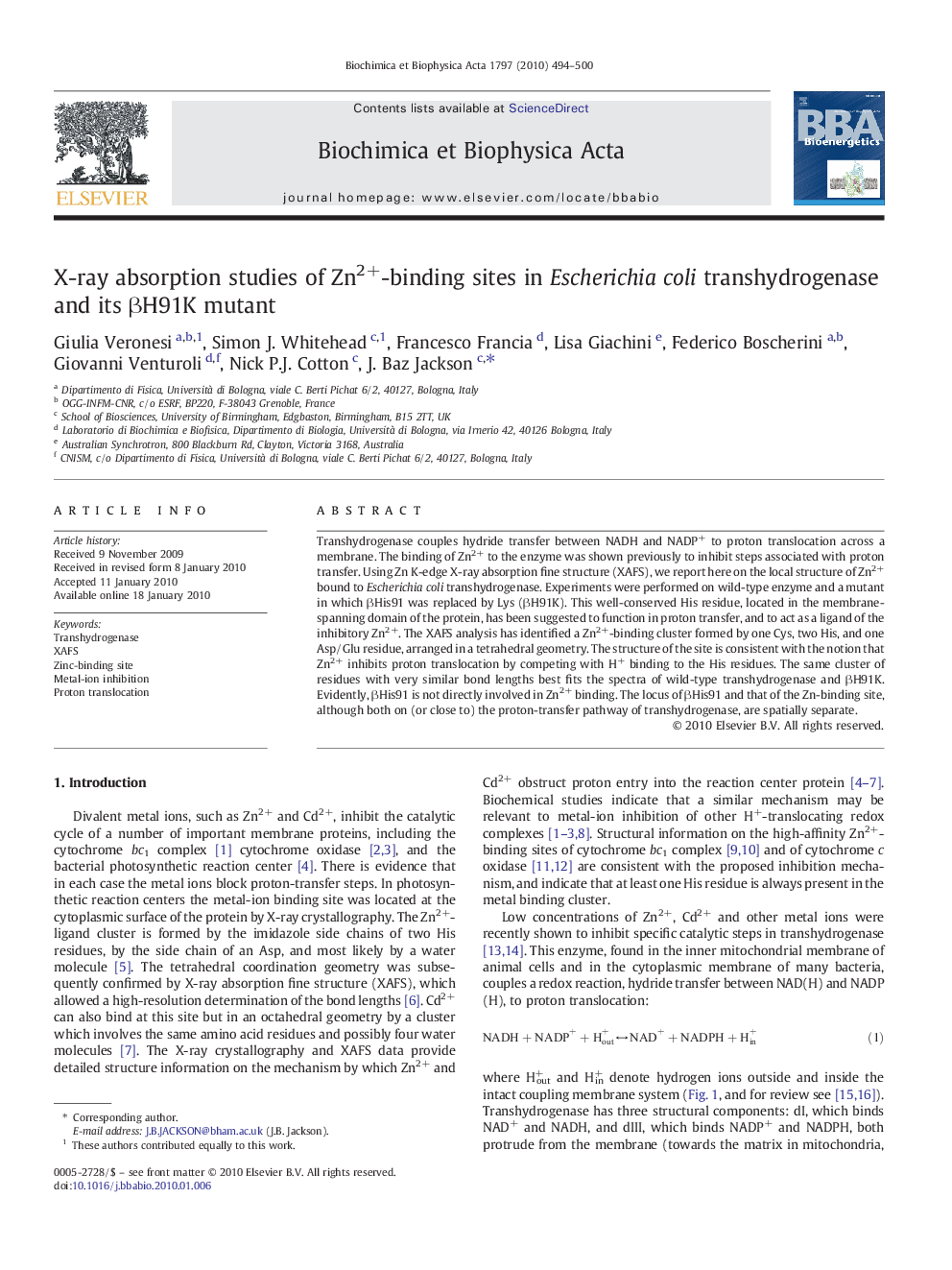| Article ID | Journal | Published Year | Pages | File Type |
|---|---|---|---|---|
| 1942886 | Biochimica et Biophysica Acta (BBA) - Bioenergetics | 2010 | 7 Pages |
Transhydrogenase couples hydride transfer between NADH and NADP+ to proton translocation across a membrane. The binding of Zn2+ to the enzyme was shown previously to inhibit steps associated with proton transfer. Using Zn K-edge X-ray absorption fine structure (XAFS), we report here on the local structure of Zn2+ bound to Escherichia coli transhydrogenase. Experiments were performed on wild-type enzyme and a mutant in which βHis91 was replaced by Lys (βH91K). This well-conserved His residue, located in the membrane-spanning domain of the protein, has been suggested to function in proton transfer, and to act as a ligand of the inhibitory Zn2+. The XAFS analysis has identified a Zn2+-binding cluster formed by one Cys, two His, and one Asp/Glu residue, arranged in a tetrahedral geometry. The structure of the site is consistent with the notion that Zn2+ inhibits proton translocation by competing with H+ binding to the His residues. The same cluster of residues with very similar bond lengths best fits the spectra of wild-type transhydrogenase and βH91K. Evidently, βHis91 is not directly involved in Zn2+ binding. The locus of βHis91 and that of the Zn-binding site, although both on (or close to) the proton-transfer pathway of transhydrogenase, are spatially separate.
